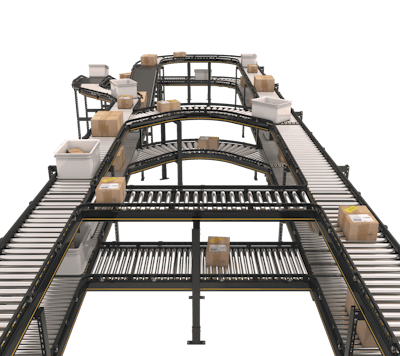
The changing landscape of e-commerce is forcing retailers and system integrators to rethink distribution and return processes, and invest in more sophisticated material-handling solutions to optimize and maximize throughput.
Due to the increase of manufacturers selling direct-to-consumers (DTC), with more than a third of consumers buying directly from a brand manufacturer’s website, omnichannel retailers are responsible for higher volumes of packages that vary in size, shape and weight and are shipped in new materials, such as polymer bags. As a result, the processes for handling these items needs an update to ensure goods move more efficiently, in a timely manner, with increased accuracy and without damage.
DTC sales are creating a much lower threshold for errors in distribution processes, as consumers expect timely and accurate delivery of goods and products. Previously, distribution within the retail channel afforded some buffer as stores could accommodate and address errors, damage or delays without visibility to the consumer. The DTC model presents a whole array of new risks for retailers to consider when planning and evaluating their distribution processes. Lost, incorrectly labeled or damaged packages have the potential to negatively impact a company’s brand and reputation, and require resources to be spent on returns, replacement or repairs.
Retailers have begun to invest in sophisticated conveyor handling solutions to properly handle packages in a variety of shipping materials, shapes, sizes and weights and to manage efficient processing of returns.
Automated conveyor systems with modular conveyor platforms offer retailers and system integrators many benefits. These platforms incorporate automated features that allow for flexibility and customization to handle smaller, lighter and differently packaged goods. Using this technology instead of bulk handling solutions provides dramatic reductions in package damage and higher accuracy with delivery times. These sophisticated platforms process returns efficiently, minimizing costs and improving inventory management.
Omnichannel retailers also can see a drastic reduction in maintenance costs and system downtime by installing automated conveyor systems. As an essentially zero-maintenance solution, these systems eliminate the nuisance of having to stop distribution processes because of maintenance repairs that can result in shipping delays and unhappy customers. Today’s intelligent, automated systems capture status information and performance data using sensors, which predict maintenance and servicing needs. This leads to less downtime and allows for predictive optimization of maintenance.
The holiday season, often the most profitable for ecommerce channels, presents an even smaller threshold for error with heightened consumer demand and time sensitivity for delivery. Retailers must update, implement and test systems well before the holiday season begins, in order to optimize efficiency levels and eliminate risk of errors. For many manufacturers, distributors and retailers, October is the final window of opportunity to conduct systems maintenance and test upgrades. Not taking advantage of this time before the peak season could result in stoppages and delivery delays, or limit scalability during the peak, so it is essential that retailers update systems before the seasonal rush.
With e-commerce continuing to evolve into a DTC industry, omnichannel retailers must stay up-to-date with consumers’ preferences, and update their systems to include new technological advances. Making improvements to existing systems will continue to be a best practice for retailers looking to grow market share in the years to come.
Stephen Cwiak is the senior vice president and head of subsystems at Interroll Group.


















